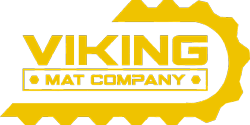SOLAR FARM CONSTRUCTION PROCESS: WHY TIMBER MATS MAKE A DIFFERENCE
 The race for renewables is on, and solar power is one of the energy sources that has driven this boom in recent years. In fact, photovoltaic capacity around the world grew by 50% in 2016 alone, accounting for the highest net growth among all energy sources. Solar farms are transforming the way the world consumes power, and they’re also changing the construction industry one project at a time.
The race for renewables is on, and solar power is one of the energy sources that has driven this boom in recent years. In fact, photovoltaic capacity around the world grew by 50% in 2016 alone, accounting for the highest net growth among all energy sources. Solar farms are transforming the way the world consumes power, and they’re also changing the construction industry one project at a time.
One of the largest challenges inherent in the solar farm construction process is the fact that some locations are better to build solar farms than others. Many of the locations in the US with the most solar energy potential also happen to be the most sparsely populated, with just a few major cities dotting barren landscapes. A low population means there is less infrastructure to utilize, including the access roads necessary to install solar panels at photovoltaic power stations.
Timber, laminated and CLT solar construction mats provide a sensible solution for private and public solar installations. With temporary access mats, solar equipment installers enjoy easy access to a construction site, even on rugged terrain. Losing just one piece of machinery can lead to costly setbacks when building a solar farm, but with a safe and reliable construction site access mat, the process becomes more predictable. Read on to see how mats make a difference in solar energy construction.
BEST PLACES FOR SOLAR PANELS
Solar farm site selection is a deceptively challenging task. Whether a private company or government body is selecting a location for a solar farm, there are many factors to consider before building. As you probably suspect, the amount of sunlight a location receives throughout the year has an effect on its solar energy potential. Thankfully, the US is a relatively sunny country, with many locations receiving an abundance of sunshine throughout the year.

Some of the best locations for solar power are smack dab in the middle of the Mojave, Sonora or Great Basin deserts. Sandy landscapes, uneven terrain, and mountainous surroundings characterize these regions — not exactly ideal conditions for moving heavy machinery. Without mats or tracks in place, wheels may get stuck in the mud, traversing vehicles could form dust clouds and heavy-duty equipment may have no chance of reaching the construction site. A slightly elevated temporary road solves all of these problems, increasing the number of viable locations for solar farms.
COST CONSIDERATIONS
For nearly every type of construction project, time is money. Nowhere is this truth more apparent than at photovoltaic power stations. Utility-scale solar projects are becoming more popular largely because the cost to build a solar farm has plummeted in recent years. When you combine falling equipment costs with enticing tax credits, it’s easy to see why there has been a rush to go solar. The cost to build a solar farm has never been lower.
The solar power boom comes with a caveat for those in the industry — while there are more projects to complete, there is also more competition in the sector. Companies must do everything they can to solve logistical challenges as efficiently as possible. Installing solar modules, connecting them to an energy grid and testing procedures are all time-consuming tasks, but access mats give your company an edge when it needs to happen quickly.
ENVIRONMENTAL CONSIDERATIONS
A benefit of renewable energy sources is that they harness power in a way that is less detrimental to the planet as a whole. If the process of installing solar panels were to destroy fragile ecosystems, it would cancel out many of the advantages that come with this green energy solution. While solar power will not lead to air pollution, water pollution or greenhouse gases as it operates, the installation process can disturb vulnerable wildlife habitats without careful planning. Even building a road over sand can disrupt the ecological balance of an area.
During solar farm construction, there is a constant stream of people coming to and from the building site. The vehicles and equipment necessary to make the project a reality are heavy, and their tracks disturb the plants and animals in the area. Utilizing an access mat to reach a work site mitigates the impact on ecosystems because it lowers the amount of pressure on the surface below tires. Mats spread weight more evenly, literally reducing the environmental footprint of the project as a whole. For companies that pride themselves on environmentally-friendly building techniques, timber mats make sense.
GET YOUR PROJECT MOVING
Anyone involved in the construction of solar farms should be excited about what the future holds. This growing industry has the potential to change the way we power our world, and the number of solar farm projects is on the rise.
These new opportunities bring new construction site challenges, and the businesses that are able to adapt will experience the most success. If you’re involved in large-scale solar power construction projects, Viking Mat may have the access road solution you’re looking for. Contact our team to learn about how we can help you become more productive on unforgiving terrain.
